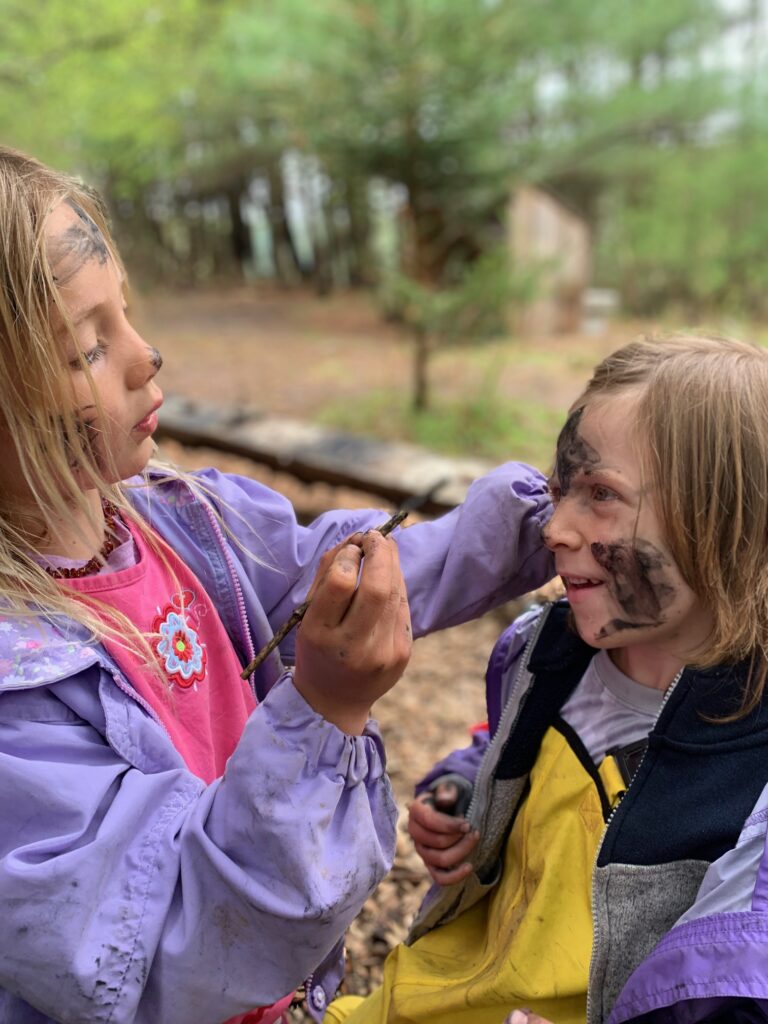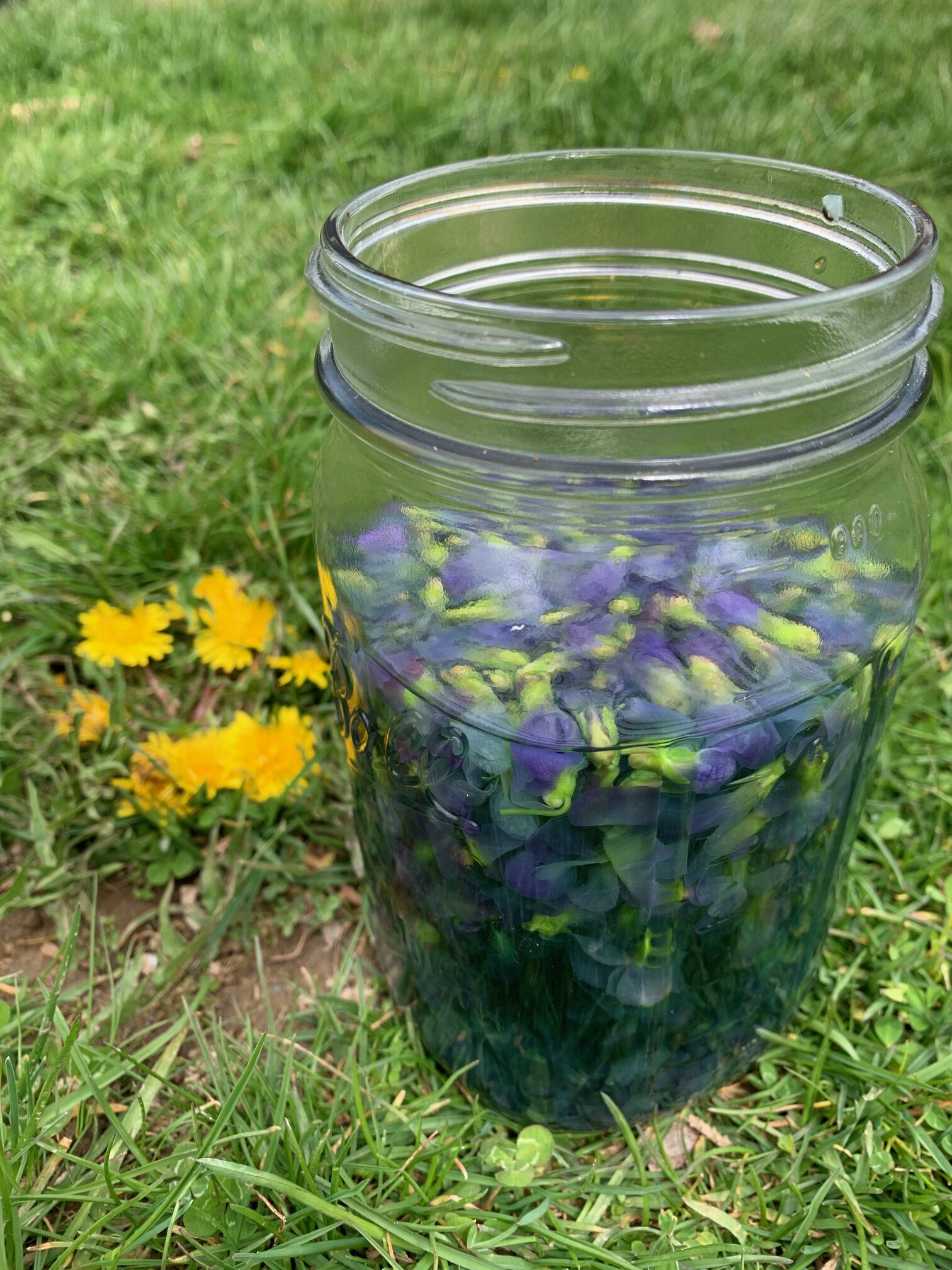This week was the perfect alchemy of warm spring weather and rain. That special combination that really makes the spring buds burst and flowers come to life. We continued our wild edible interest from last week with a focus on an equally beautiful and delicious wild food: violets!
On Tuesday morning, we noticed the dandelions had finally sprung to life and offered our gratitude to a clump growing in the middle of our morning circle. It was a sweet scene watching each child come up and tenderly whisper their thanks to these cheery spring flowers. Gratitudes are such a grounding part of starting our days and it’s always fun to see what new types of practices we come up with throughout the year.
Later in the day, we turned our attention to the violets, which seemed to have magically sprung up over the weekend. We use an acronym APPLLE to help us remember how to harvest wild edibles both safely and ethically:
A: Ask permission from the plant. Ask a grownup too and make sure they are 100% sure that the plant is edible.
P: Pollution. Check to make sure you are picking in an area free of pollution from roads, pets, etc.
P: Parts. Know which parts of the plant are edible. Sometimes some parts are edible while others are not.
L: Look-alikes! Know what plants look like your plant in question and be sure it is not a non-edible look-alike—it is so important to be sure of your ability to properly identify!
L: Leave what you don’t need…only harvest what you need or can reasonably eat.
E: Enjoy and give thanks to the plant!


Together we looked at the violet and compared their leaves to a lookalike periwinkle flower. The children pointed out the leaves are shaped differently and made astute observations on petal shape differences between the two plants. We had a fun time taking a very close look at the violets and getting to know some of their qualities before jumping into harvesting. After filling a jar full of the beautiful purple petals, back at camp we boiled water and watched as the water in the jar turned the most beautiful blue!
Wednesday’s rain did not stop us from our camouflage mission! Instead of flowers this time, we used rocks to make different color pigments to paint our counselor Lily before we sent her off into the woods to hide. The kids loved mixing charcoal face paint and collecting rocks by the stream to make into rock paint. We discovered even simple-looking stones had all different shades of brown, yellow, and red inside. When we found Lily, she gifted us honey, our final ingredient for the violet syrup. We strained our violets and boiled the liquid with honey, which turned deep blue. We will use this syrup to make pink lemonade next week—yum!


Thursday was a glorious spring day. We spent the morning planting service berries along the field fence beside the Roly Polies (the Thursday Forest K group). In a few years, the field will be brimming with blueberries, serviceberries, hazelnuts and more, thanks to the help of students this week.
After our work, we took a wander to the farm stream, searching for spring ephemerals along the way. We spotted lots of trout lilies, Solomon’s seal, trillium and a few others. At lunch, we played a fun oral storytelling game where the children helped to invent a story. Their imaginations and ability to weave complex story items was truly impressive!
—JJ, Raei, and the counselors
May 5, 2022
